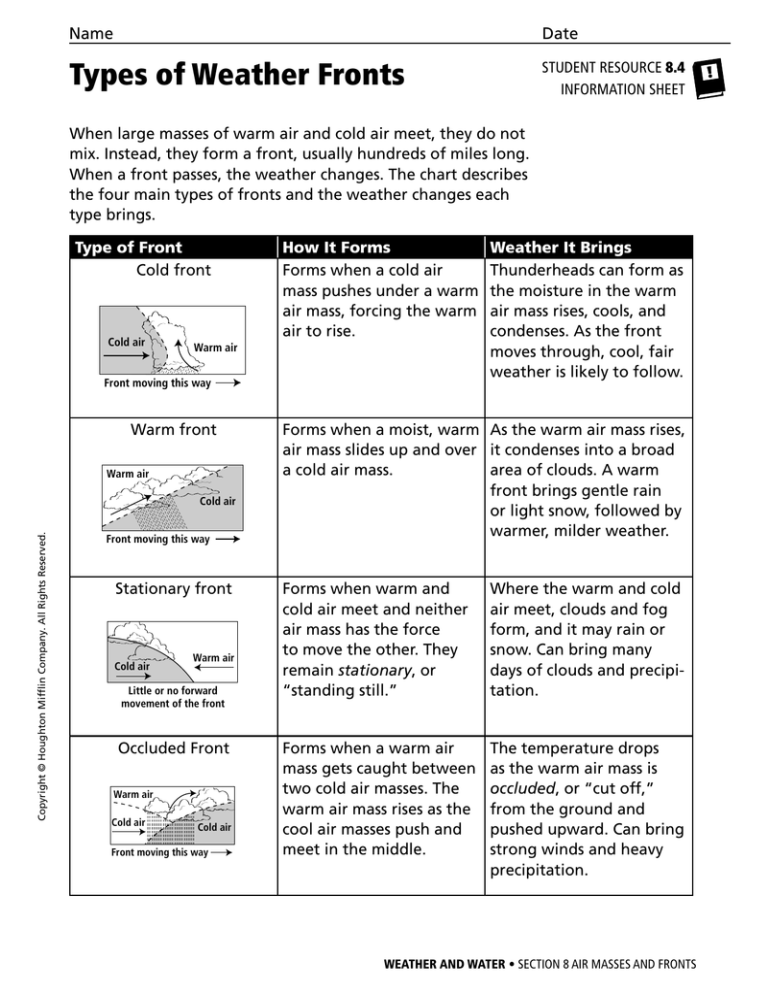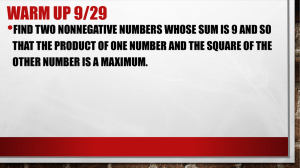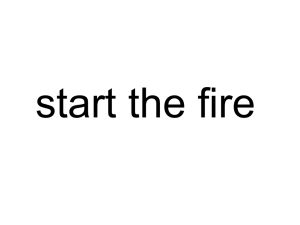
Name
Date
Types of Weather Fronts
STUDENT RESOURCE 8.4
INFORMATION SHEET
When large masses of warm air and cold air meet, they do not
mix. Instead, they form a front, usually hundreds of miles long.
When a front passes, the weather changes. The chart describes
the four main types of fronts and the weather changes each
type brings.
Type of Front
Cold front
Cold air
How It Forms
Forms when a cold air
mass pushes under a warm
air mass, forcing the warm
air to rise.
Warm air
Front moving this way
Warm front
Warm air
Copyright © Houghton Mifflin Company. All Rights Reserved.
Cold air
Front moving this way
Stationary front
Cold air
Warm air
Little or no forward
movement of the front
Occluded Front
Warm air
Cold air
Cold air
Front moving this way
Weather It Brings
Thunderheads can form as
the moisture in the warm
air mass rises, cools, and
condenses. As the front
moves through, cool, fair
weather is likely to follow.
Forms when a moist, warm As the warm air mass rises,
air mass slides up and over it condenses into a broad
a cold air mass.
area of clouds. A warm
front brings gentle rain
or light snow, followed by
warmer, milder weather.
Forms when warm and
cold air meet and neither
air mass has the force
to move the other. They
remain stationary, or
“standing still.”
Where the warm and cold
air meet, clouds and fog
form, and it may rain or
snow. Can bring many
days of clouds and precipitation.
Forms when a warm air
mass gets caught between
two cold air masses. The
warm air mass rises as the
cool air masses push and
meet in the middle.
The temperature drops
as the warm air mass is
occluded, or “cut off,”
from the ground and
pushed upward. Can bring
strong winds and heavy
precipitation.
WEATHER AND WATER • SECTION 8 AIR MASSES AND FRONTS




